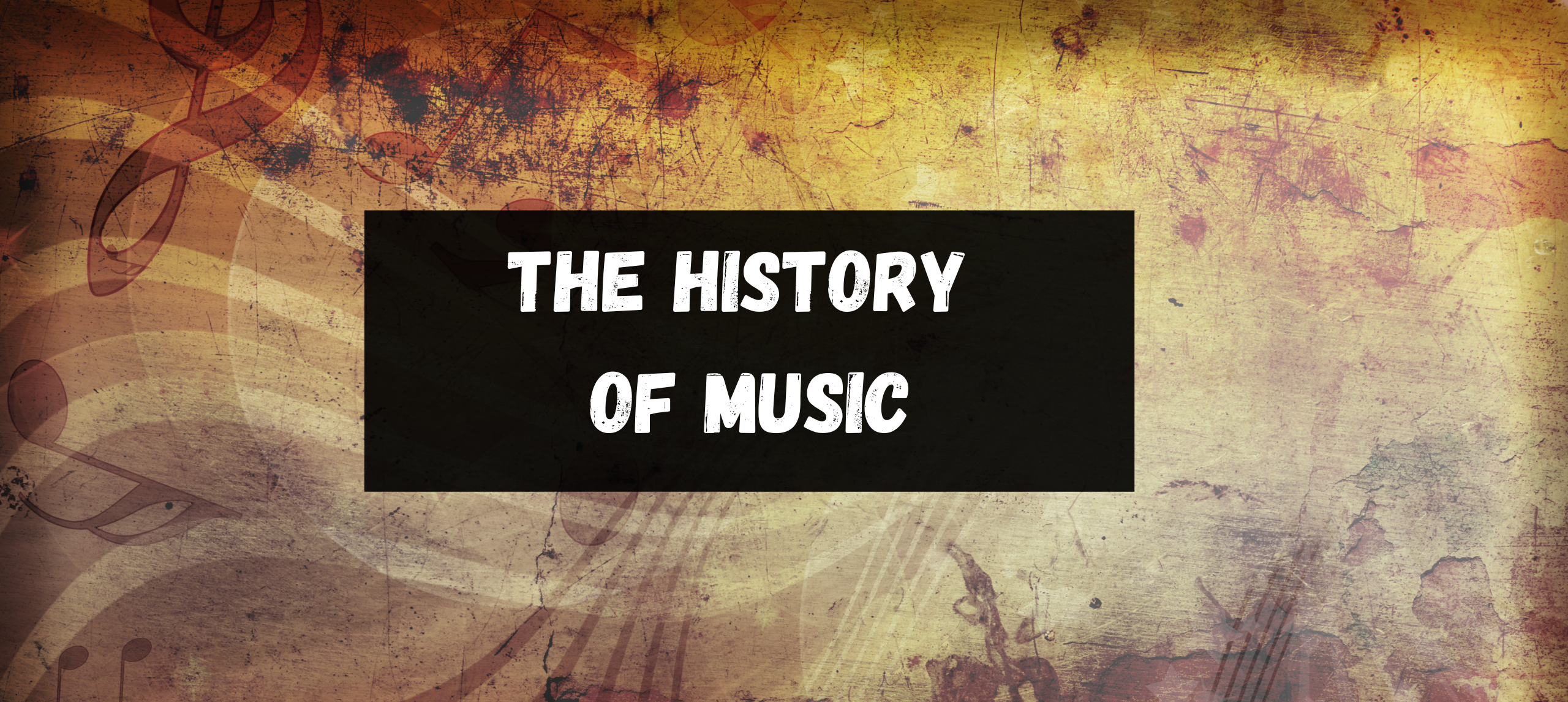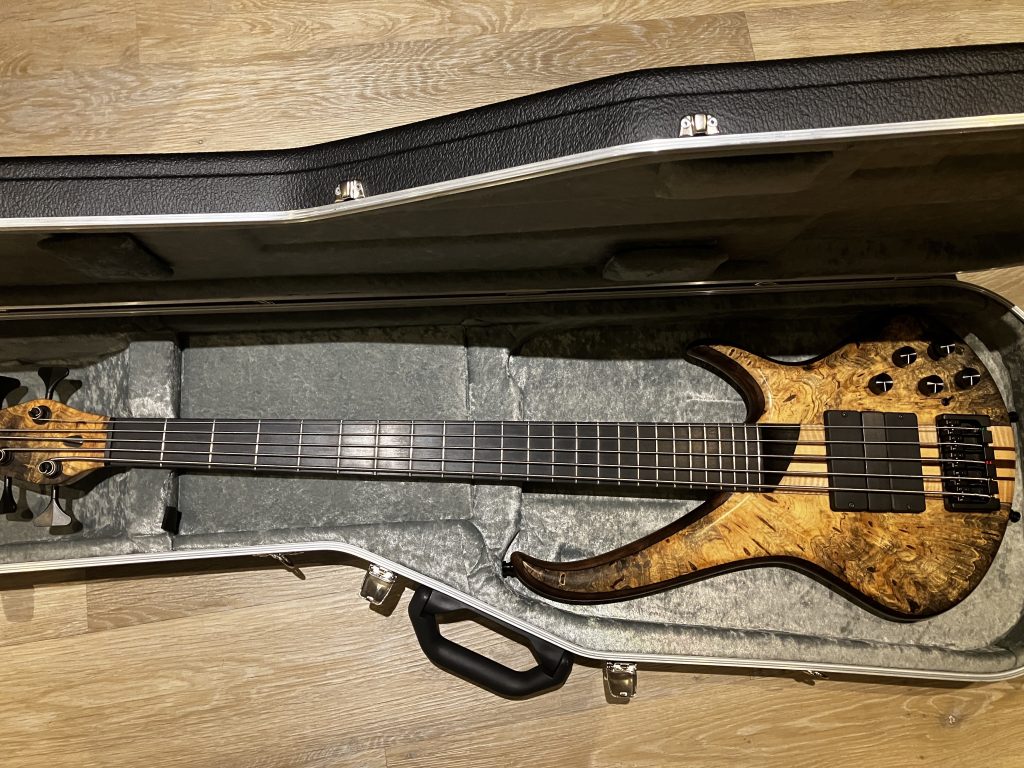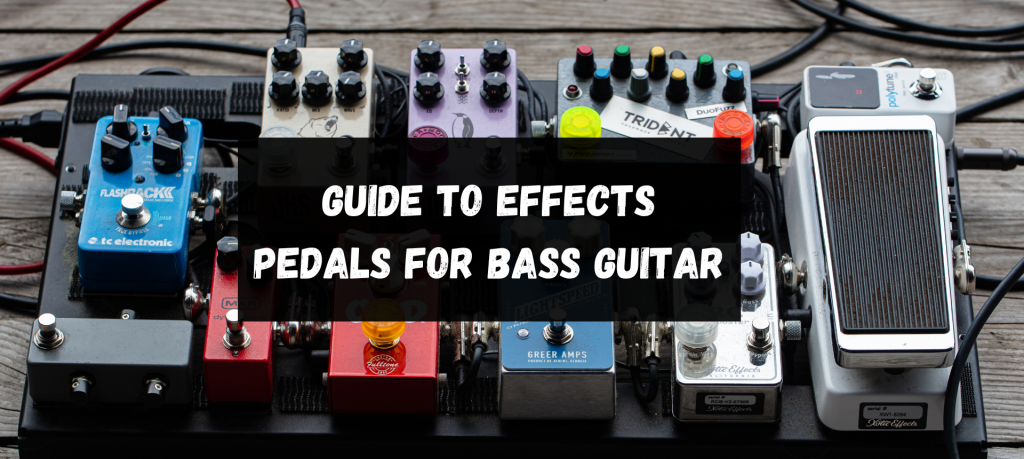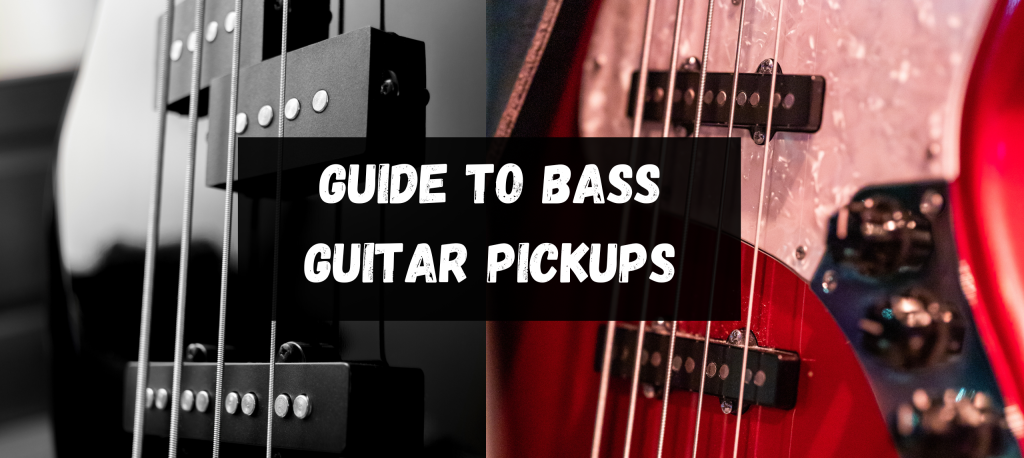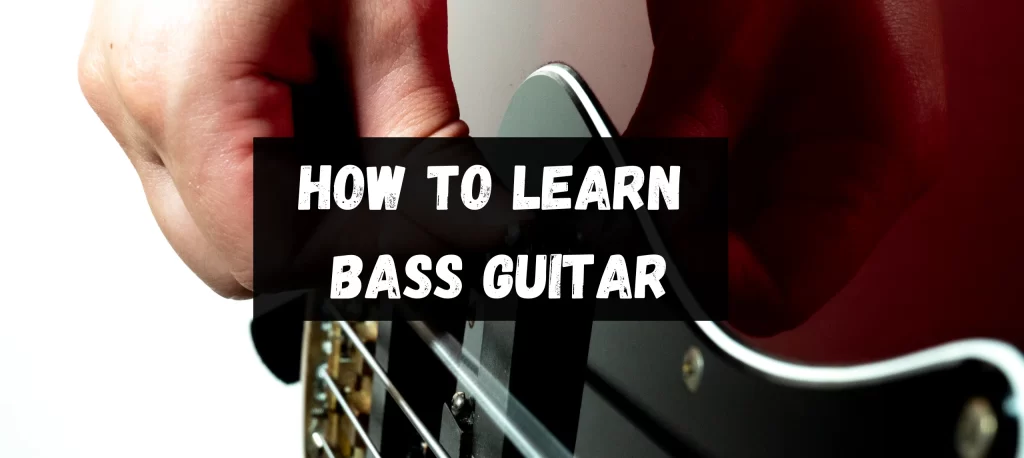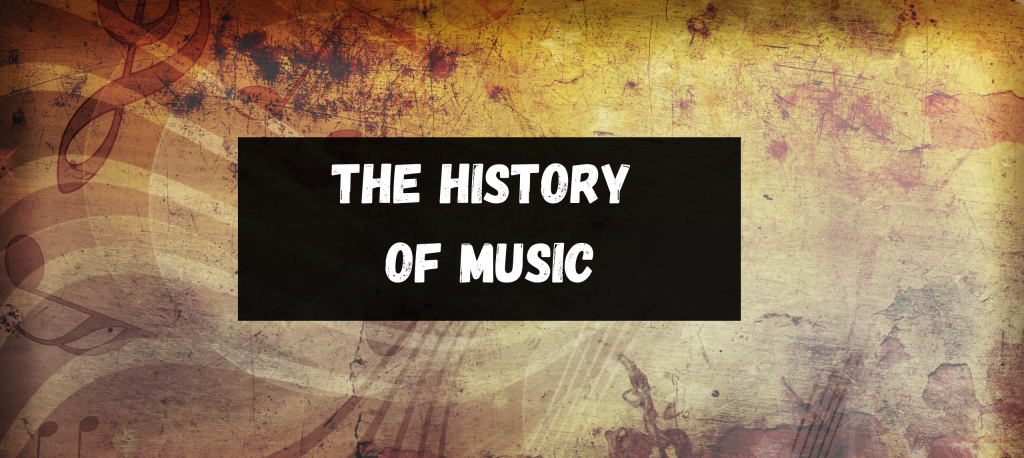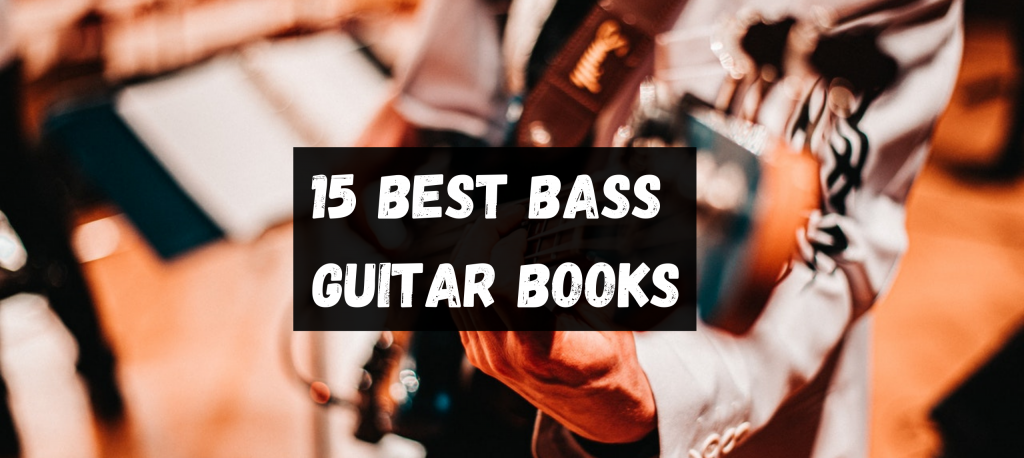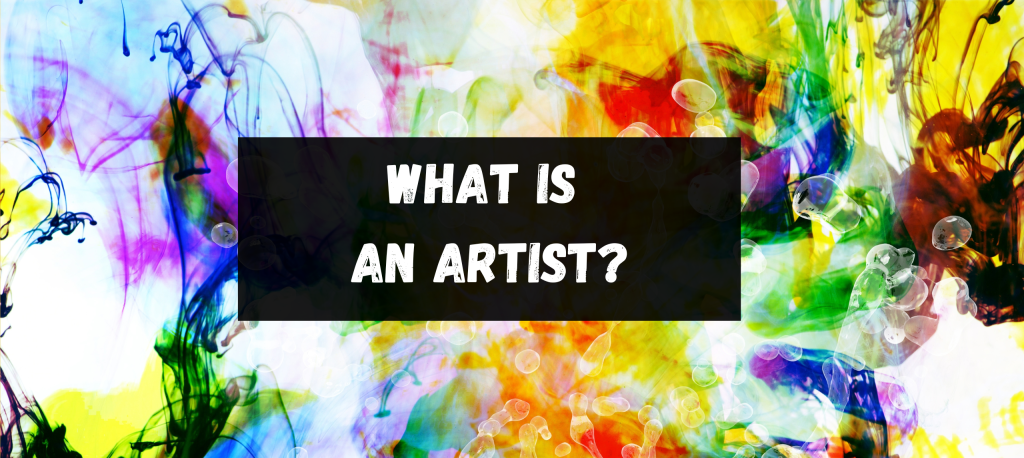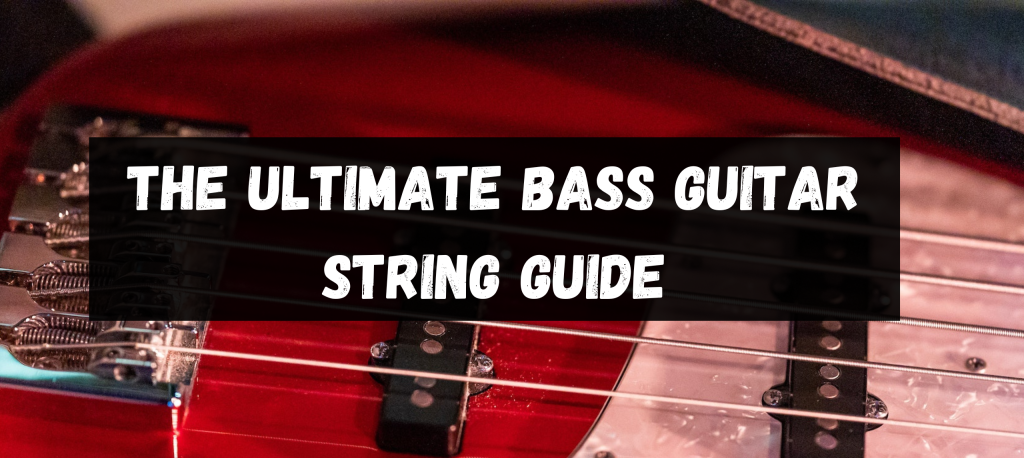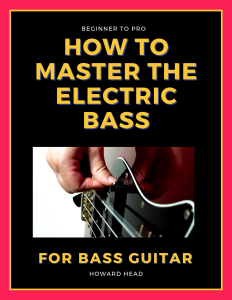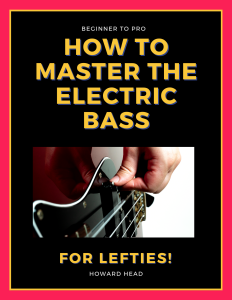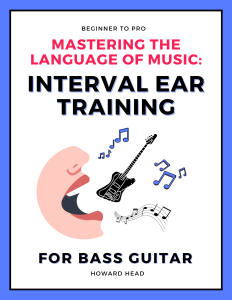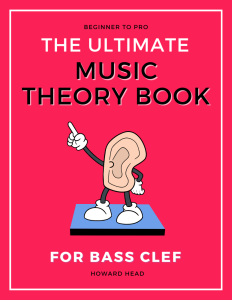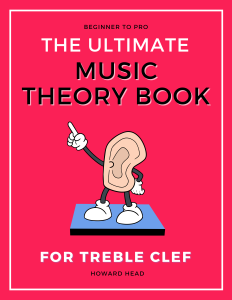September 2, 2023
Howard
Today, we’re pulling back the curtain on the grand stage of musical evolution. Whether you’re mad for Mozart or potty for punk, this comprehensive look at the history of music has something for every pair of ears. Oh, and if you’re yearning for an even deeper dive, we’ve peppered in links to some brilliant blogs that’ll sort you out with the finer details. What’s your genre? How did the greats compose their tunes? You’ll find the answers and much more, all laid out for you in this one-stop-shop for music aficionados.
So, buckle up, tune your senses, and prepare yourself for a tour that spans from the haunting chants of ancient civilisations to the digital beats that define today’s soundscapes. After all, understanding where we’ve been is key to imagining where we’re going, musically speaking.
Let the journey begin, and as we say in the rock ‘n’ roll world—let’s make some noise!
Understanding Music
Definition and Terminology
Now then, before we embark on this odyssey through musical history, it’s crucial to grasp what we actually mean by ‘music’. You see, music is more than just an arrangement of notes and melodies; it’s a universal language, a form of expression that transcends borders and time zones. Is it art? Most certainly. Is it science? You could argue that as well.
Scientifically speaking, sound waves are characterised by their frequency, amplitude, and timbre.
Frequency: Determines the pitch of the sound. Higher frequencies result in higher-pitched sounds, and lower frequencies produce lower-pitched sounds.
Amplitude: Defines the loudness or volume of the sound. A greater amplitude will result in a louder sound, while a lower amplitude will produce a softer sound.
Timbre: Also known as the ‘colour’ or ‘quality’ of the sound. It’s what makes different instruments or voices distinct from one another, even if they’re playing or singing the same note at the same volume.
When these elements come together in a structured way, we perceive it as music. Different combinations of pitch, volume, and timbre produce various musical notes and chords, which can then be arranged into melodies, harmonies, and rhythms.
Personally, my favourite definition of music is that it is simply emotion. Emotion from the soul that travels via energetic frequencies and sound waves. The purpose of music (and art) therefore, holds a spiritual/communal aspect, as it intends to generate a response from the spectator (emotional, psychological or physiological), so that they too, can become a participant.
‘Music is the shorthand of emotion’ – Leo Tolstoy
For those intrigued by other details, our companion blog “What is Music?” takes a dive further.

Origin Theories
But where did it all start? That’s the million-pound question, isn’t it? The origin of music is shrouded in as much mystery as a backstage rider. Some theories suggest it began with the mimicry of natural sounds, while others reckon it has spiritual origins, designed to connect us to something greater than ourselves. One thing is clear: music has been with us for a long, long time, and it’s knitted into the very fabric of human existence.
So, with that brief overview in hand, we’re better equipped to dig deeper into how music has shaped and been shaped by the passage of time.
The Dawn of Music: Tracing Back to the First Notes
Many historians and ethnomusicologists believe that rhythm and voice are likely the most ancient forms of music-making.
The Earliest Records
The first recorded mention of music dates back to the Sumerian era, around 3400 BCE (5,423 years ago, or 3,400 years before the designated starting point of the Common Era), where musical instructions for a hymn were notated on a cuneiform tablet. This ancient artifact, known as the “Hurrian Hymn No. 6,” is the earliest known example of documented music, offering a tantalising glimpse into the auditory world of our ancestors.
Resonating Through Antiquity
Following these rudimentary beginnings, the documentation and complexity of music began to grow. Ancient Greece, for example, has provided us with the Delphic Hymns, which date back to the 2nd century BCE. These hymns, written to honour the god Apollo, demonstrate a sophisticated understanding of scales, harmony, and notation, setting the groundwork for the Western musical canon.
Beyond the Mediterranean
While Europe was carving out its own musical traditions, it’s essential to note that other parts of the world were also making significant contributions. Ancient Indian texts like the Natya Shastra, written between 200 BCE and 200 CE, outline the theoretical foundations of Indian classical music. Meanwhile, in China, the “Book of Songs,” a collection of 305 songs dating from the 11th to 7th centuries BCE, stands as an important record of early Chinese music and poetry.
A Journey Through Western Musical Traditions
Before we embark on this exploration of key periods that have shaped Western music, let’s set the stage. It’s important to note that this discussion is centred on Western musical traditions, from medieval monophonic melodies to the complex orchestrations of the Romantic era. Each period in this geographical and cultural context has left an indelible imprint on the tapestry of music as we understand it today. We’ll be exploring the defining characteristics, significant figures, and landmark compositions that encapsulate each Western epoch.
Medieval Period
This period in Europe was between 500 to 1400–1500 CE, (or the 5th to the 15th century) and was called this by scholars to denote the span of time between their own time and the dissolution of the Western Roman Empire.
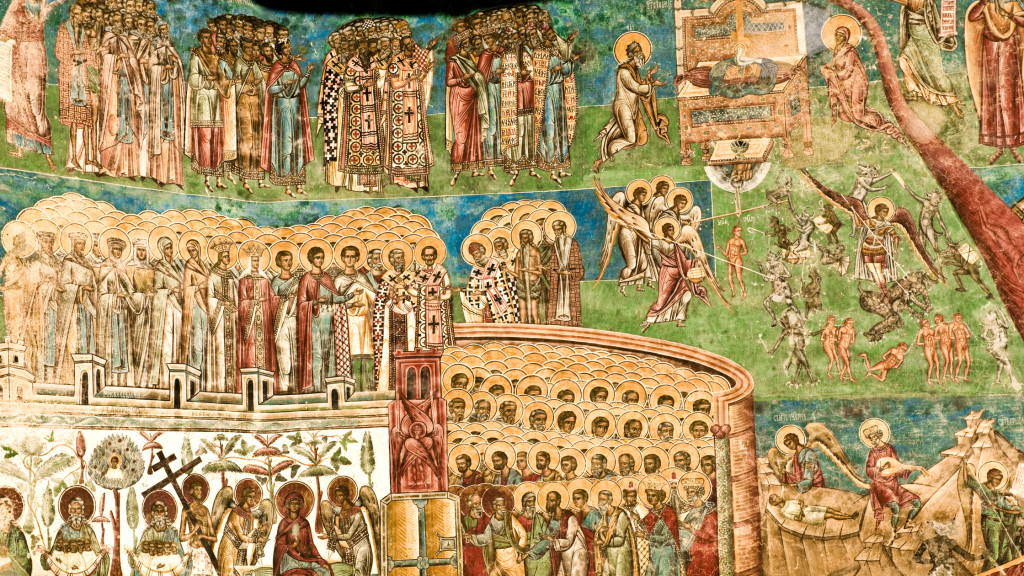
Medieval Folk Music
Carnivals and Fairs: A Symphony of Sounds
The medieval period was punctuated by a calendar full of fairs, carnivals, pagan celebrations and other communal gatherings, each accompanied by its unique soundtrack. From the lively fiddles driving dancers in circles to the melodic strains of the lute captivating audiences, music was a cornerstone of these events.
Role of Music in Public Celebrations
In a time without recorded music or mass media, these events were critical in disseminating new songs and styles across regions. Whether the occasion was a seasonal fair, a religious pilgrimage, or a local wedding, you could be sure that music would play a central role in the celebration. It brought communities together, transcending social class and offering a collective experience that was both entertaining and spiritually uplifting.
Court Jesters: More Than Mere Folly
Court jesters, or fools as they were sometimes called, were a staple in the courts and often performed at public events. Contrary to the buffoonish caricatures often portrayed in popular culture, these jesters were skilled musicians, dancers, and even poets. They held a unique position in both aristocratic and common circles, serving as a bridge between different societal realms.
Famous Jesters
- Will Sommers: A well-known jester in the court of Henry VIII, he was reputed to be one of the few people who could make the temperamental king laugh.
- Triboulet: A jester in the courts of Louis XII and Francis I in France, he’s said to have been exceptionally sharp-witted and is the subject of Victor Hugo’s play “Le Roi s’amuse,” which inspired Verdi’s opera “Rigoletto.”
Troubadours and Bards: The Wandering Minstrels
Troubadours and bards were the celebrities of their day, travelling from town to town and court to court, sharing tales of love and chivalry through their music. They played an essential role in shaping the medieval musical landscape, introducing poetic forms and musical styles that would endure for centuries. Their performances often combined storytelling with song, making them the multimedia artists of their time.
Famous Bards
- Taliesin: A 6th-century Welsh bard, he’s considered one of the earliest poets of the British Isles. His poems have been passed down through manuscripts and are still studied today.
- Aneirin: Another Welsh bard from roughly the same era as Taliesin, he is best known for the poem “Y Gododdin,” which commemorates a tragic battle and is one of the earliest surviving pieces of Welsh literature.
Famous Troubadours
- Bernart de Ventadorn: A 12th-century troubadour, his love songs became the model for subsequent generations of lyric poets.
- Guiraut Riquier: Known as the last of the great troubadours, his poems and melodies have survived, making him one of the better-documented composers of his era.
Gregorian Chant Music
Gregorian chant, named after Pope Gregory I, represents one of the earliest forms of written Western music. Primarily vocal, it was used as the music of the Roman Catholic Church for several centuries. These chants are monophonic, meaning they consist of a single, unaccompanied melodic line, often performed by monks in unison.
Characteristics and Notation
The notation for Gregorian chant was initially quite rudimentary, using a system called ‘neumes,’ which only suggested melodic contours rather than specific notes. Over time, this evolved into a more comprehensive system of notation that laid the groundwork for Western music notation.
Modes and Moods
A unique feature of Gregorian chants is their use of modes, which are like scales but with different intervallic patterns. These modes were used to create specific moods that corresponded to the liturgical function of the chant. Whether solemn or joyous, the mode set the emotional tone for the religious observance.
Gregorian chant served as the foundation upon which later forms of ecclesiastical and secular music were built. It influenced the development of polyphony and led to the musical notation system we use today. Its modal systems even find echoes in some modern genres like jazz and ambient music.
The Renaissance Period
The Renaissance, often referred to as the ‘rebirth’, was a period of immense cultural and artistic flourishing from the 14th to the late 17th century. This era witnessed revolutionary changes in music that paralleled advances in art, literature, and science.
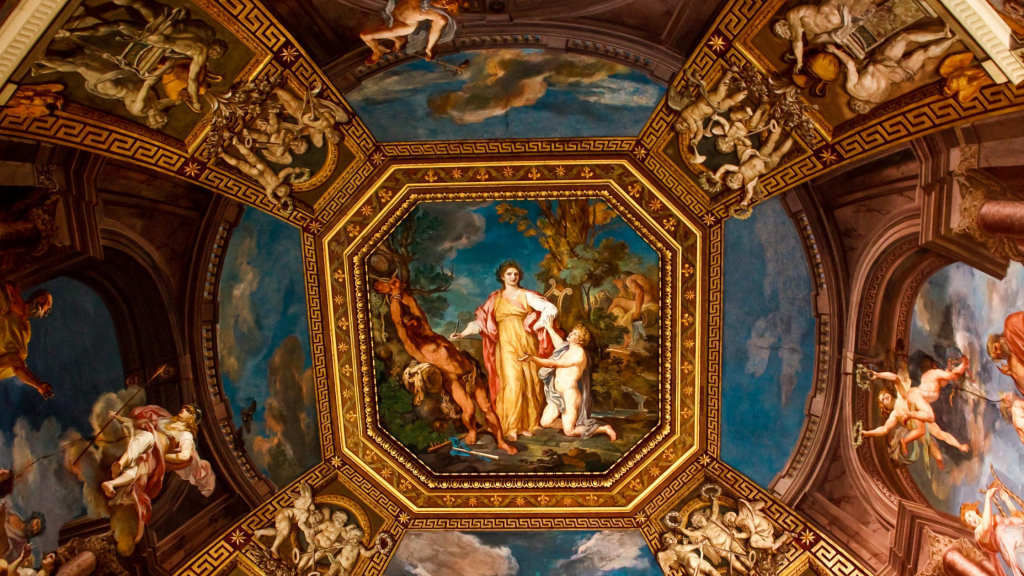
The Rise of Polyphony
While medieval music was predominantly monophonic, the Renaissance brought with it the widespread adoption of polyphony, a complex layering of multiple independent melodies. This evolution towards complexity and depth changed the texture of music, making it richer and more expressive.
The Printing Press: Music for the Masses
One of the most transformative events for music was the invention of the printing press. For the first time, musical compositions could be printed and disseminated widely. This not only made music more accessible but also allowed composers to gain fame well beyond their localities.
Sacred vs Secular: A Musical Balance
The era was notable for a significant emphasis on both sacred and secular music. While the Church continued to be a dominant patron of the arts, the rise of the middle class and a humanistic focus led to a surge in secular compositions, such as madrigals and chansons.
Instrumental Music: A Genre Takes Shape
The Renaissance was also the period when instrumental music began to gain prominence. Compositions initially served as accompaniments for dances but gradually evolved to become complex pieces performed independently.
Key Composers:
A discussion on the Renaissance would be incomplete without mentioning the contributions of towering figures like Josquin des Prez, Palestrina, and William Byrd. Their compositions not only reflect the musical ideals of the time but also set the stage for the Baroque period that followed.
The Baroque Period: The Age of Grandeur
Following the Renaissance, the Baroque era (1600-1750) took music into an age of grandeur and emotional depth. Characterised by elaborate ornamentation and intense expressivity, Baroque music aimed to evoke strong emotional responses in its listeners.
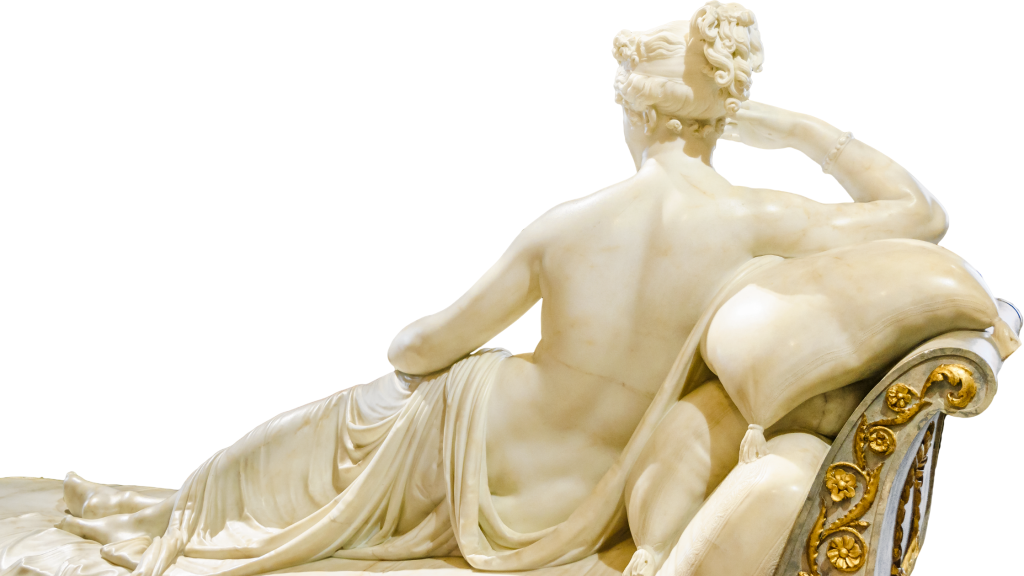
The Birth of Opera
One of the most significant innovations of the Baroque period was the development of opera. Combining music, drama, and stagecraft, opera became the epitome of Baroque extravagance, with composers like Monteverdi and Handel leading the way.
Concertos and Sonatas: The Rise of Instrumental Forms
While vocal music remained essential, the era also saw the rise of instrumental forms like the concerto and the sonata. Composers such as Vivaldi and Bach created complex compositions that showcased the virtuosity of individual instruments, setting the stage for future developments in symphonic music.
Counterpoint and Harmony: The Technical Aspects
Technically, the Baroque era was marked by the use of complex counterpoint and sophisticated harmonic structures. These elements gave the music a rich texture, enabling composers to weave intricate musical tapestries that were both emotionally charged and intellectually stimulating.
Sacred Music: The Lutheran Influence
On the religious front, the Protestant Reformation had a profound impact on sacred music. Composers like Bach, who was heavily influenced by Lutheran ideals, created choral works and cantatas that are considered masterpieces to this day.
The Classical Period: The Pursuit of Balance and Clarity
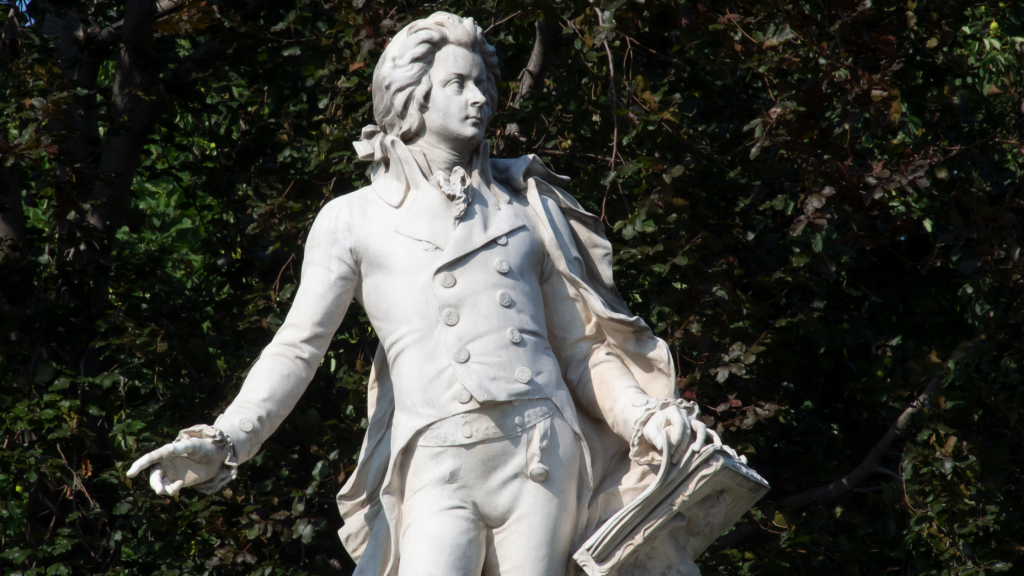
The Enlightenment Influence
Emerging from the shadow of the Baroque period, the Classical era (roughly 1750-1820) was deeply influenced by the Enlightenment ideals of rationality and balance. The grandiosity of the Baroque era was replaced by a focus on clarity, order, and proportion.
Symphonies and Sonatas: Structural Maturity
One of the most important contributions of the Classical era was the development and maturation of specific musical forms, most notably the symphony and the sonata. Composers like Haydn and Mozart perfected these forms, creating templates that would be used for centuries. Though more restrained than the Baroque and less emotive than the Romantic, the Classical era’s emphasis on structure and clarity had a long-lasting impact.
The Concert Experience: Music for the Public
This period also saw the rise of public concerts, moving music from royal courts and religious settings into public concert halls. This broadened the audience considerably and made composers think about their works in the context of public performance.
Opera and Drama: The Mozartian Genius
While opera was already a well-established form, Mozart brought dramatic integrity and emotional depth to this genre, most notably in masterpieces like “Don Giovanni” and “The Marriage of Figaro.”
The Role of the Piano
The piano replaced the harpsichord as the keyboard instrument of choice, allowing for greater dynamic contrast and expressivity. Beethoven, who would serve as a bridge to the Romantic era, used the piano’s capabilities to great effect, expanding the boundaries of what could be expressed musically.
A New Approach to Orchestration
The Classical era also saw significant advancements in the art of orchestration. The addition of woodwind and brass instruments provided composers with a broader tonal palette, paving the way for the intricate orchestrations of the Romantic era.
The Romantic Period: The Height of Emotional Expression

The Spirit of Romanticism
The Romantic era (approximately 1820-1910) marked a dramatic shift towards emotional depth and individualism in music. It was an era where feeling took precedence over form, and composers like Schumann, Chopin, and Wagner became heroic figures embodying these new ideals.
The Lyrical Soul: Art Songs and Lieder
Vocal music took a more intimate form with the emergence of Lieder (German art songs) and other art songs. Composers such as Schubert and Schumann created miniature masterpieces that explored the depths of human emotion, often set to the words of great poets.
The Symphony Evolves: From Beethoven to Mahler
The symphony, already a mature form by the end of the Classical period, was transformed by Beethoven’s revolutionary approach. This trend was carried forward by composers like Brahms, Tchaikovsky, and Mahler, who added personal narratives and greater emotional scope to the symphonic form.
Programmatic Music: Telling Stories Through Tones
Romantic composers often used music to tell a story or paint a picture, a technique known as programmatic music. Berlioz’s “Symphonie Fantastique” and Strauss’s tone poems are prime examples of how music became a medium for storytelling.
Operatic Drama: The Wagnerian Legacy
In the operatic realm, Richard Wagner took the art form to new heights with his concept of the “Gesamtkunstwerk” (total artwork), where all artistic elements—music, text, and visual—were unified (perhaps this is also where the idea of a concept album came from?). His “Ring Cycle” is one of the most ambitious works ever conceived in Western music.
Virtuosity and the Cult of the Performer
The era also saw the rise of the virtuoso performer. Pianists like Liszt and violinists like Paganini became the rock stars of their day, mesmerising audiences with their technical prowess and emotional intensity.
Nationalism in Music:
Nationalism became a potent force in music, as composers like Dvorak and Sibelius infused their works with folk themes and native musical idioms, offering a sonic representation of their homelands while contributing to the international musical landscape.
The End of an Era: Transitioning into Modernism
By the end of the 19th century, the high emotionalism of the Romantic era began to give way to the more cerebral concerns of Modernism. But the legacy of the Romantic era remains palpable, its emphasis on emotional depth and individual expression continues to resonate in various forms of music today.
Global Musical Innovations
While the focus of this article is largely on Western musical traditions, it’s essential to acknowledge the diverse and rich musical tapestries that exist worldwide. From the intricate ragas and taals in Indian classical music to the storytelling prowess of African griots, each region has contributed uniquely to the musical lexicon. Far East traditions, like Chinese and Japanese music, offer their own ancient melodies and instruments, which have evolved over time. Likewise, the rhythmic beats of Latin America and the poignant sounds of Indigenous music reflect a universal human connection to music. Whether it’s through unique scales, novel instruments, or groundbreaking techniques, these global traditions have significantly shaped our understanding and appreciation of music today.
Modern Explorations
Jazz
Jazz was born in the African American communities of New Orleans in the late 19th and early 20th centuries, but it quickly became a musical language that transcended race and geography.
Innovations:
- Syncopation: Breaking away from the conventional rhythms, jazz introduced unpredictable accents in its musical lines.
- Improvisation: Jazz music greatly valued spontaneous musical expression.
- Modal Jazz: A deviation from traditional scales led to the creation of new modes and scales.
Key Figures:
- Louis Armstrong: A pioneer in improvisation and trumpet techniques.
- Duke Ellington: Known for his orchestration and complex compositions.
- Miles Davis: Introduced modal jazz and several other groundbreaking approaches.
Impact:
- Cultural Revolution: Jazz became a form of protest and self-expression against racial inequality.
- Global Influence: Jazz elements can be found in countless other genres and cultures, from Latin Jazz to European Jazz scenes.
Blues
Originating in the Deep South of the United States, blues music was derived from African musical traditions and became the emotional outlet for African American communities.
Innovations:
- 12-Bar Blues: A common chord progression that became the backbone of blues music.
- Call-and-Response: A vocal pattern where a leader sings a line and is answered by a chorus, often seen in work songs.
- Slide Guitar Techniques: Unique ways of using the guitar were developed, including the slide guitar.
Key Figures:
- Robert Johnson: Known for his emotive vocal delivery and complex guitar techniques.
- B.B. King: Introduced the concept of lead guitar in blues bands.
- Muddy Waters: Credited with electrifying the blues and laying the groundwork for rock ‘n’ roll.
Impact:
- Foundation for Rock: Blues heavily influenced the development of rock music.
- Socio-political Messages: Like jazz, blues also became a form of protest, notably during the Civil Rights Movement.
Intersection of Jazz and Blues
It’s important to note that jazz and blues are intrinsically linked. Blues had a significant impact on the formulation of jazz, especially in the realms of improvisation and emotional expression. Artists like Nina Simone and Ray Charles blurred the lines between these genres, making way for new sub-genres like Soul and R&B.
Rock ‘n’ Roll:
Emerging from the fusion of blues, country, and R&B, rock ‘n’ roll burst onto the scene in the 1950s, challenging societal norms and kickstarting a cultural revolution.
Innovations:
- Electric Guitar: The electric guitar became the signature instrument of rock music, with artists creating unique riffs and solos.
- Amplification: Advances in sound technology allowed rock music to fill stadiums, turning concerts into mass social events.
- Albums over Singles: Rock shifted the focus from single tracks to concept albums, giving artists greater creative freedom.
Key Figures:
- Elvis Presley: Known as the “King of Rock ‘n’ Roll,” Elvis brought the genre into the mainstream.
- Jimi Hendrix: Elevated the electric guitar to new heights with experimental techniques.
- The Beatles: Transformed rock with intricate songwriting and innovations in recording technology.
Impact:
- Counterculture: Rock became the anthem for various social and political movements, from the Civil Rights Movement to anti-war protests.
- Genre Evolution: Led to a multitude of sub-genres, including punk, metal, and grunge.
Electronic and Hip-Hop: The Beat Goes Digital
By the late 20th century, the advent of digital technology paved the way for entirely new genres like electronic music and hip-hop.
Innovations:
- Synthesizers: Brought an entirely new palette of sounds.
- Sampling: Allowed artists to use snippets of other recordings in their own music.
- Beatboxing and Turntablism: Became core elements of hip-hop culture.
Key Figures:
- Kraftwerk: The pioneers of electronic music who integrated synthesizers into popular music.
- Grandmaster Flash: Renowned for his innovative DJ techniques.
- Public Enemy: Known for their politically charged lyrics and criticism of the media.
Impact:
- Global Movement: Hip-hop and electronic music have global fanbases and have been adopted by multiple cultures.
- Internet Era: These genres thrived in the digital age, with artists breaking through via social media platforms.
I’ve Got a Full List of Genres Here!
21st Century
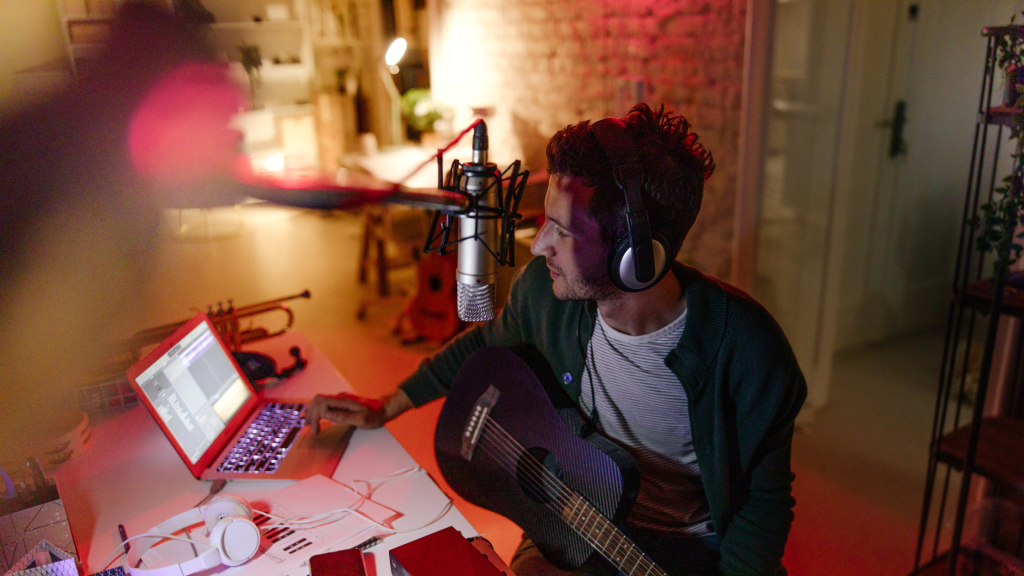
Rise of the DIY Artist
The 21st century ushered in a new wave of independent music—colloquially known as ‘DIY Musicians’—giving a voice to artists who operate outside of traditional music labels. The proliferation of social media platforms and advanced recording technology has had a seismic impact on music creation and consumption.
Innovations:
- Internet Distribution: The rise of the internet and streaming services allowed DIY artists to distribute their music globally without a record label.
- Home Studios: Affordable recording equipment has enabled artists to produce high-quality music from the comfort of their homes.
Impact:
- Democratisation of Music: Indie music has levelled the playing field, allowing unknown artists to gain an audience.
- Genre Fusion: It has also become a breeding ground for genre fusion, combining elements of rock, electronic, folk, and more.
- Instant Exposure: Artists can now gain worldwide fame overnight, thanks to viral social media trends.
- Community Building: Social media allows artists to cultivate global fanbases and communities around their music.
The Double-Edged Sword of Modern Music’s Landscape
While the digital era has democratised the music industry to an unprecedented extent, it has also given rise to new sets of challenges that artists must navigate.
Overcrowding in the Digital Space
It’s estimated that a staggering 60,000 tracks are uploaded to Spotify every single day—that’s a new track every 1.4 seconds. The sheer volume of content makes it increasingly difficult for individual tracks or artists to stand out.
The Social Media Paradox
Social media platforms, hailed as a free self-promotion tool, are both a blessing and a curse. While they offer artists the ability to connect with global audiences, they are also arenas of fierce competition. More than that, the visual and textual nature of these platforms doesn’t lend itself well to the auditory medium of music.
Can You Really Create High-Quality Music at Home?
Home studios lend themselves very well to electronic artists. However, when you have to record live instruments and singing, it can be more challenging as you still need the no-how and the right acoustic environment. When it comes to mixing and production quality, this is also extremely important in a saturated market, and being both a sound engineer and a sound mixer requires a lot of technical skill!
Music’s Identity Crisis
As music becomes ever more intertwined with visual aesthetics and social media personas, some argue that the industry is undergoing an identity crisis. The legendary jazz musician Herbie Hancock encapsulates this sentiment succinctly:
“Music doesn’t matter anymore. People don’t care anymore about the music itself; they care about who makes the music. The public is more interested in celebrities and how certain artists are more famous than the music they make.”
In essence, the technology and platforms that have liberated musicians have also created new barriers and challenges. While it has never been easier to produce and release music, standing out amongst the cacophony of digital voices has never been harder. This state of affairs calls for a reassessment of what it means to be a ‘successful’ artist in the modern age, and perhaps, a return to prioritising the art form itself over the noise that surrounds it.
Predictions for Music’s Future
Given the evolving landscape we’ve discussed, what could the future of music look like? While it’s hard to pinpoint exactly, here are a few educated guesses:
Decentralisation of the Industry
As independent artists continue to leverage digital platforms, we could see even less reliance on traditional record labels. This could democratise music further, allowing for more voices to be heard, albeit at the risk of market saturation.
The Rise of Niche Genres
With a vast digital marketplace, there’s room for every conceivable sub-genre to find its audience. We might see a proliferation of increasingly specialised musical styles, leading to both a diversification and fragmentation of musical culture. Let’s not forget that the internet has vastly increased global influence that could inspire more unique genres.
The Role of AI and Technology
From AI-generated compositions to immersive virtual reality concerts, technological advancements could redefine our very understanding of what constitutes ‘music’ and ‘performance.

Discussing about AI music causes many ethical issues and generates a question of authenticity. Music is emotion, will a machine ever be able to effectively replicate that unless sampling a live vocalist? Then there’s the questions:
- Who owns an AI-generated song if it’s made by a machine?
- Who owns the artist voice? The record label or the artist?
- Is it ethical to bring back an artist from the death and recycle their voice?
- What happens to musicians if AI music takes off?
- Will AI products have to be labelled ‘Made by an AI’
Of course there are positives to AI, it would serve as a useful tool in education and idea generation. However, AI music creation would definitely remove further barriers, and you’ll likely see the music market massively saturated. Imagine how many tracks will get uploaded every day if everyone can create AI music!!
Renewed Focus on Live Performances
Given the challenges of standing out in a digital marketplace, live performances could regain prominence as artists seek more direct and memorable ways to connect with audiences.
Social Activism and Music
As societal issues continue to polarise, music may increasingly serve as a platform for activism and social change, echoing the role it played in the Civil Rights Movement and other historical inflection points.
A Return to Authenticity?
Following Herbie Hancock’s sentiment, there might be a cultural shift back towards valuing the music itself over the personalities and aesthetics surrounding it. As the novelty of digital saturation wears off, listeners might find themselves yearning for something more genuine and emotionally resonant. The powers in your hands, support your local emerging talent!
In fact, I predict that there will be a cultural movement of people who crave authentic music, who are separate from mainstream AI products. An increased Indie community.
Conclusion
As we’ve seen, the future of music is both exhilarating and perplexing. On one hand, we have the democratising force of technology, making it easier for anyone to create, distribute, and appreciate music. On the other, the sheer volume of content and the emerging role of AI complicate matters of authenticity and originality. The commodification of the art form through social media and music videos adds another layer to this complex milieu, sometimes overshadowing the music itself.
However, amid these complexities and challenges lies immense promise for innovation and transformation. Herbie Hancock’s cautionary words resonate as we ponder the double-edged sword that is progress: while technology has the power to elevate music to new heights, it also raises questions about what we lose in the process.
In the end, whether it’s a soulful blues tune or an algorithmically perfect symphony, music will continue to serve as a mirror reflecting the complexities, hopes, and fears of the society that creates it. As long as we continue to engage with it—not just as passive consumers but as active participants in its evolution—we can look forward to a future rich with sonic explorations, breaking new ground even as we pay homage to the enduring legacies of the past.
You may also like:

Howard Head
I turn confused bass enthusiasts into bass gods through a simple and logical process.

